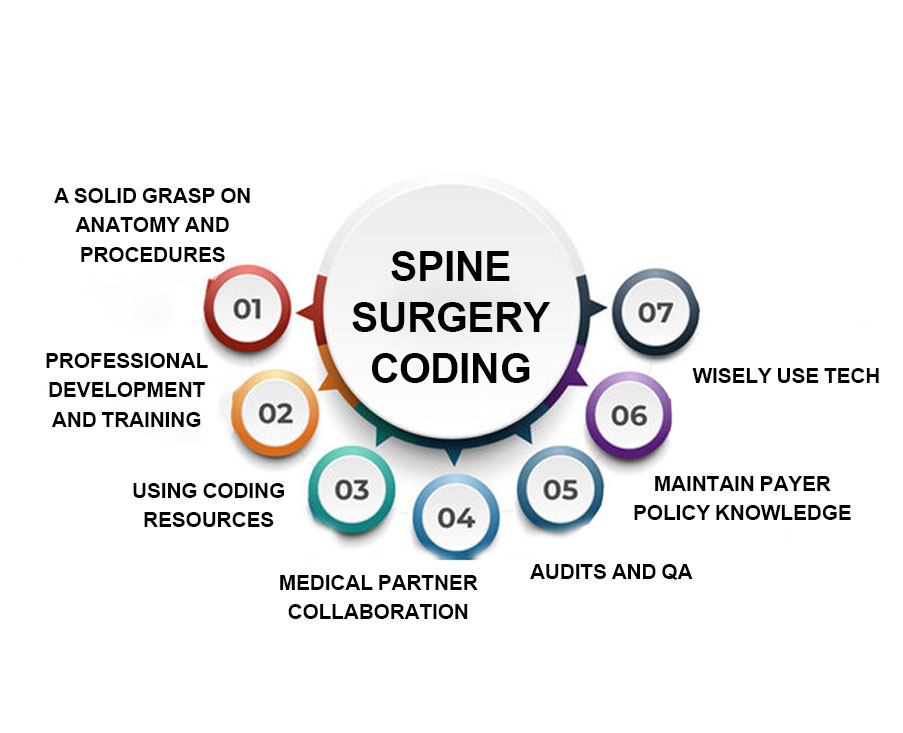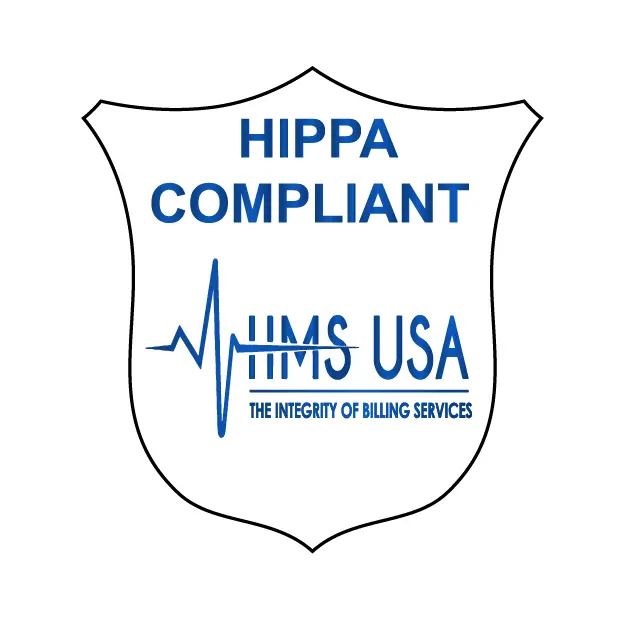
Mastering the CPT Code for Spine Surgery: Best Practices and Updates
Precision is needed in the complex healthcare system’s CPT code for spine surgery. This hidden language helps communicate with healthcare wizards (professionals), money sorcerers (billing entities), and insurance gatekeepers. Accurate coding unlocks medical billing, insurance claims, and healthcare finances as the medical landscape gets more specialized.
CPT code for spine surgery are the stars of this amazing show. These numerical wizards can simplify spine procedures for the healthcare industry. Join us as we explore the need for exact coding in spine surgery and how CPT codes magically facilitate communication and financial transactions in healthcare.
Understanding Spine Surgery Coding
Spine surgery coding assigns codes to spinal surgeries and interventions. American Medical Association (AMA) CPT codes are comprehensive and standardized. Healthcare workers, medical coders, and billing specialists must understand spine surgery coding.
Spine surgery coding involves finding and using CPT codes for diagnostic and complicated spinal treatments. The system maintains medical documentation uniformity and is crucial for reimbursement and compliance.
Healthcare providers need precise coding to get paid. Insurance companies and payers use these codes to calculate procedure reimbursement. Accurate coding helps ensure ethical and transparent billing, compliance with healthcare legislation, and audit prevention.
Thus, understanding spine surgery coding is more than just an administrative requirement—it affects healthcare practitioners’ finances and the healthcare system’s efficiency and integrity. The importance of CPT codes for spine surgery becomes more apparent as we study them.
Standard CPT Code for Spine Surgery
Healthcare workers and coders must grasp CPT code for spine surgery. This list of spine surgery CPT codes is organized by series to indicate distinct components of these complex procedures.
1. Code 22XXX Series: Specific Codes for Spine Procedures
The 22XXX CPT codes cover a variety of spine treatments. Each code in this series represents a spine surgery, diagnostic, or therapeutic technique. These codes standardize spine-related documentation and payment from spinal arthrodesis to spinal osteotomy.
2. Code 63XXX Series: Additional Codes for Spinal Fusion Procedures
CPT codes for spinal fusion surgeries are in the 63XXX series. These codes define the number of spinal levels, graft material, and anterior or posterior fusion methods. Understanding these codes is essential for accurately documenting and billing spinal fusion surgeries.
3. Code 64XXX Series: Codes for Laminectomy and Decompression
The 64XXX CPT codes cover laminectomy and decompression. Laminectomy removes a vertebra’s lamina (bony arch), while decompression relieves spinal nerve pressure. This standardization of spine surgery coding and invoicing allows healthcare providers, insurers, and billing entities to communicate accurately.
Details on Each Major Code and When to Use It
Code 22XXX
Details on spinal fusion, instrumentation, and disc excision are covered in this series. Guidelines for using each code based on the technique.
Code 63XXX
Code breakdown, distinguishing anterior and posterior spinal fusion and vertebral levels. Understanding when to utilize each code.
Code 64XXX
In-depth look at laminectomy and decompression treatments. Clarification on when to use these codes based on laminectomy extent and decompression methods.
Understanding the primary spine surgery CPT codes helps with proper coding, precise documentation, and successful healthcare ecosystem communication.
Coding Challenges and Solutions
As with every medical coding specialty, spine surgery coding has specific issues, maintaining accuracy and compliance and reducing billing inconsistencies requires addressing these difficulties. Spine surgery coding issues are discussed here, along with practical answers.
- Spine surgeries are generally multi-part. Coders may struggle to communicate the intricacy of these therapies in CPT codes.
- Only complete or clear documentation can make spine surgery coding easier. Coders must pull information from complete medical records to code accurately.
- Spine surgery techniques and technologies change. Accurate coding requires keeping up with AMA coding guidelines and revisions, which can be difficult.
Correct Coding Tips and Documentation Requirements
- Open communication is essential. Regular cooperation helps coders grasp each procedure, enabling precise code assignment.
- Healthcare is constantly changing. Thus, continuing education is essential. Coders can remain ahead of industry developments with regular training on updated coding guidelines and new practices.
- Detail-oriented documentation protocols should be used in healthcare. Coders can accurately translate spine surgery complications into CPT codes with clear and complete records.
- Coders should use AMA and other reliable resources. Coding manuals, newsletters, and online platforms provide coding guidelines and updates.
Recent Changes and Updates
Spine surgery coders must stay current on CPT code changes in the ever-changing healthcare market. Spine surgery coding is dynamic, like medical coding. Some recent modifications include new codes, tweaks to existing codes, and coding standards. Advances in surgical techniques, equipment, or procedural categorization may change the coding structure.
Staying current on these developments is important for several reasons. First and foremost, correct coding affects reimbursement. Outdated or erroneous codes might cause billing inconsistencies, delayed payments, or financial penalties. Keeping up with coding changes assures compliance with industry standards and regulations, reducing audits and legal issues.
These changes require continual education and professional development for healthcare providers, coders, and billing specialists. Regularly studying official code materials, attending training events, and participating in professional forums helps stay current on spine surgery coding.
Importance of Accurate Documentation
Accurate documentation is crucial to spine surgery coding. Complete documentation supports correct code assignment, healthcare professional communication, and ethical and transparent billing.
Accurate documentation is key to spine surgery coding. Clinicians must describe preoperative examinations, surgical techniques, problems, and post-operative care. This detailed documentation assists code assignment, care continuity, and patient safety.
Guidelines for Clinicians to Ensure Proper Documentation
- Clinicians should document in precise, detailed terminology. Code assignment is accurate when technique, anatomical location, and supplementary services are well described.
- Documenting the procedure’s medical necessity is crucial. Explaining the spine surgery indications and reasons helps code and justify medical decisions.
- Documentation must be timely and complete. Completing the medical record immediately after the surgery reduces the chance of omission or error.
- Open contact between clinicians and coders promotes accurate documentation. Clinicians should help coders understand any medical record detail.
Best Practices for Spine Surgery Coding

Coders must follow best practices to stay accurate and efficient in spine surgery coding’s complicated terrain.
1. A Solid Grasp on Anatomy and Procedures
Coders must know spinal anatomy and spine surgery processes. With this underlying information, case-specific code assignment is accurate.
2. Professional Development and Training
Medical coding, especially spine surgery, requires ongoing training. To stay current on coding changes, principles, and practices, coders should attend regular training, workshops, and educational programs.
3. Using Coding Resources
4. Medical Partner Collaboration
Achieving proper coding requires collaboration with healthcare providers. Regular communication gives coders clear documentation, reducing errors and conflicts.
5. Audits and QA
Internal audit and quality assurance can catch coding problems before they affect reimbursement. Reviewing coded cases regularly improves accuracy.
6. Maintain Payer Policy Knowledge
Understanding payer policies is crucial. Payers may have spine surgery coding guidelines. Known policies ensure payer expectations are met.
7. Wisely Use Tech
Software and tools for coding to improve efficiency. Update coding technology and employ tools that speed up without sacrificing correctness.
For more coding details: What are the CPT Codes for Mental Health Billings? – 2024
How to Keep Up with Coding Changes and Guidelines
- Signing up for medical coding newsletters, journals, and forums delivers industry updates.
- Attend medical coding webinars and conferences, especially spine surgery ones, to learn from experts, ask questions, and stay current.
- Joining professional networks and forums lets coders share information, discuss challenges, and obtain help. These networks give invaluable coding change data.
- Visiting AMA coding websites provides the newest code guidelines and changes.
Read More: OB GYN Billing And Coding Guidelines for Financial Health
Conclusion
Spine surgery coding involves best practices, education, and collaboration. Coders who know CPT codes for spine surgery are the forgotten heroes who keep healthcare providers financially stable and compliant. These coding wizards simplify spine surgery for accurate billing, smooth financial transactions, and regulatory compliance.
Learning anatomy, continuing education, interacting with healthcare experts, and being current on coding changes can help spine surgery coders. Integrating audit procedures and technology boosts productivity and reduces errors.
Increasing coding accuracy and healthcare billing success requires ongoing education and collaboration between coders and providers. Best practices and knowledge make coders crucial to healthcare system integrity and efficiency as spine surgery advances.
FAQs
Spine surgery CPT codes are numerical identifiers for medical operations. Accurate billing, insurance claims, and healthcare finances depend on it.
Correct spine surgery codes ensure proper service reimbursement, affecting healthcare providers’ finances. Accurate coding prevents billing problems, ensuring financial stability.
Spine surgery coders must continue learning about new treatments, rules, and industry trends. They get more proficient and assign codes accurately.
Open communication helps spine surgery coders work with doctors. They verify procedure specifics to ensure correct documentation and code assignment.
Spine surgery CPT codes standardize communication between healthcare professionals, billing organizations, and insurance carriers. These codes guarantee healthcare ecosystem members comprehend complex operations.











